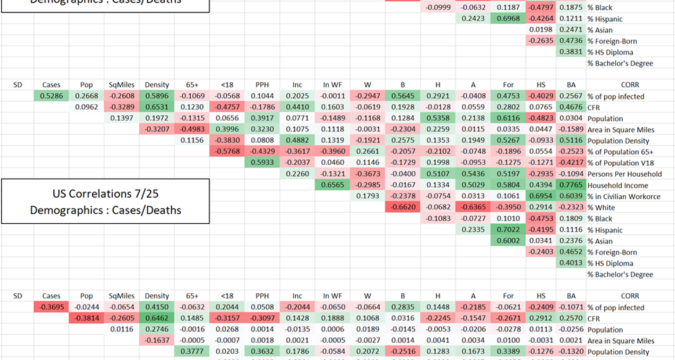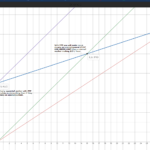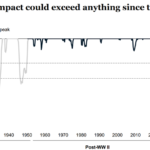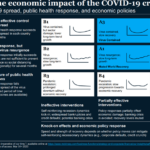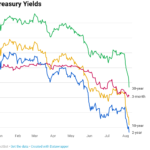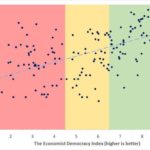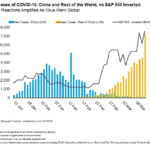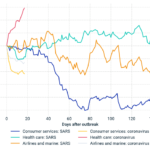A series to support the spread of facts; today’s topics – (A) Does a Mask really matter? (B) Is it worse for minorities?
The amount of confusion regarding pandemic urban legends has made it easier for opinion to magically transform into fact, and it has become a popular past-time to vilify political opponents by condemning COVID responses by any means necessary. In order to combat this alarming trend, I will periodically provide my own opinion (lol) and randomly sprinkle in scientific research to support my conclusions. It’s true that one could just act like they are an expert without any encouragement from the internet, but if I was that lazy I’d just go work for the media.
(A) Masks are dumb – or smart. They are a sign of sheeple – or intelligence. They are useless – or vital.
I heard each of those opinions on the news today. It would be impressive enough to have experienced news-anchor disagreement at the beginning of the pandemic, but nearly 7 months after the Huanan Market their use remains controversial. The real answer is they DO work, and also that they DONT.
The truth is that face coverings are not an all-or-nothing solution; their effectiveness is in the middle of the spectrum, not polarized at opposite ends. Viruses are small enough to pass through most of the cloth varieties being worn, but when everybody is wearing one far fewer nasties are floating in the air. We can detect flatulence because some of the offender’s poo particles / gasses escape through clothing, but no one advocates universal full nudity since it’s useless to fight the ‘system.’ Prior to the development of gas masks, soldiers in World War I had to pee on a rag to protect against Chlorine gas; I doubt it was that much fun, and it doesn’t work against pathogens, but the key takeaway is that something is better than nothing.*
*Actually, the key takeaway is that we have made masks less effective by bypassing them – many of you have seen mask-wearers leave a public restroom without washing their hands. The COVID virus is an equal-opportunity-orifice exiter, which has helped fuel its transmission rate despite our near universal mask adoption. Hand sanitizer, masks and social distancing can’t protect us from our own stupidity.
(B) The ‘Madrid Malaise’ and Minorities
I came face-to-face with this question in March, when I analyzed demographics with case rates (by state) for the first time. Many researchers, then and now, have drawn conclusions about how COVID-19 impacts groups in unbalanced ways, but my low expectations in modern political discourse nudged my fevered brain into some number-crunching of my own (given that ‘Wuhan Virus’ is offensive, perhaps I should call it ‘Madrid Malaise,’ in recognition of my likely infection source).
The header image for this article represents the updated correlation calculations between pairs of COVID/demographic data. I’ve added color for fellow right-brained individuals, but the numbers represent the strength of the relationship between any two figures; as the result gets closer to 1 or -1, their connection to the other statistic gets stronger. For instance, a state’s ‘people per household’ and % of population younger than 18 has a strong positive correlation (.5933), which makes sense because most children live at home and more kids live with their families than adult siblings, grandparents, etc.
It’s vital to note that the correlations I compiled are not national per se; they are the result of two sets of 52 numbers (including Puerto Rico and DC). Immediately, it becomes clear that total infections and deaths go up as a state’s proportion of white residents decreases. However, none of the correlations with ‘white share of population’ even approaches .5 in either direction – this mostly shows that white Americans are more evenly sprinkled and more numerous in general.
The murder of George Floyd drastically increased the attention paid to what had been largely painted over during the pandemic – the huge disparity between pandemic cases in urban areas and prisons, compared to the rest of the country. I must emphasize the horror I felt watching such a callous indifference fuel a murderer’s disregard for the value of human life. It immediately sparked the memory of struggling to breathe that i had experienced two months earlier, and the psychological trauma that can be inflicted when choking and terrified. I had spent a career teaching Marines about chemical and biological weapons, and while stuck in bed in mid-March I compared COVID’s symptoms to Sarin gas or Anthrax – both cause asphyxiation that can be traumatic just to observe, and it breaks my heart to know that medical and financial reasons make it more likely for minority families to experience severe infections.
Despite this, the last three months have led to a reduced share of cases amongst black Americans, as well as a weakening of the mortality correlation. The strong positive correlation between higher levels of education and higher CFR has continued, and greater wealth also leads to higher risk, but the consistency of that pattern shows that affluent residents of urban areas are victims of population density, regardless of skin color. The most vulnerable minorities are foreign-born, Asian or Hispanic, and living in higher-density urban areas. The crisis in New York City was fueled by high volume international traffic, because ‘foreign born’ residents are far more likely to travel during events like Christmas and Chinese New Year. The spread was so fast, in such perfect conditions, that the tipping point for exponential growth fell before the city’s initial lockdown attempts. Based on what I saw in Europe, President Trump’s controversial decision to close down air travel saved the rest of the country from New York City’s fate; the slow response of the European Union doubled or tripled the eventual death toll.
If this analysis seems disjointed, the fault lies with the huge number of implications that can be gleaned from the data. I was very reluctant to point out my results in March, because politically-motivated types would be quick to spin and frame the numbers in order to justify discriminatory policies (immigration changes, racial tension, etc.). In the aftermath of the Floyd protests, I was torn about whether or not to share the interpretation of another portion of my research;
But, I have decided to provide the primary projection in hopes that future unscrupulous leaders will consider alternatives to the protests from 29 May – 2 June. The prevailing narrative was that red states had opened too soon and case numbers would skyrocket as a result, but opportunistic politicians ignored their own advice to allow (and lead) massive demonstrations through many of the nation’ largest cities.
When COVID-19 began exponentially growing again, this time in the south and midwest, the chorus condemning Republican governors was almost unanimous. My second attached image depicts the sudden shift in new cases across many states, and the key dynamic is that the start or re-start of peak growth (depicted by an X) that occurred almost simultaneously nationwide. Texas’ first phase of opening began 4/27, with new cases beginning to explode on 6/13 – an outcome that seems to have validated the dire projections that drove federal actions during the second half of March.
However, the data continues to reject a direct link between early re-opening and our current peak: I sorted the states by their governor’s political party, and then by the re-opening date (colored brown, except for South Dakota which never officially closed). The only red states that opened later than early May were New Hampshire, Vermont, Massachusetts and Arizona (VT & MA are blue states that just happen to have Republican governors), and all of them were open by May 26th, when George Floyd was killed in Minneapolis.
The red line denotes the 26th of May, and the period from May 29th to June 2nd saw more than a million protestors march through the streets in most major US cities. If the sudden spike in confirmed infections was driven largely by re-opening measures. then we could expect the “X” dates of new infection spread to roughly follow the same curve as the emergence from lockdown; instead, most states saw sudden changes that correlated well with the incubation period of COVID-19 (3-14 days) when counting from the start of mass protests. For example, daily new cases in Texas began rising between June 13th-15th, six weeks after re-opening on April 27th, despite remaining flat for more than a month. There have been a few outliers, but infection rates rose exponentially in June regardless of when lockdowns were lifted.
In sum, the correlation table has continued to reflect the same basic characteristics as the pandemic shifted towards the south and west, but Americans below the poverty line are susceptible because they are more likely to to live in densely populated areas and carry high rates of comorbidities. The second chart shows the epidemiological impact of the protests. By encouraging mass protests (in defiance of orders largely written by themselves) mayors and governors in places like Dallas and California ensured that COVID-19 would spread faster and further, especially amongst the most vulnerable demographic groups. The impact of bars and shopping re-opening is dwarfed by the impact of encouraging masses of young people to vent their frustration in the middle of a pandemic.
I’m optimistic that the global response to Floyd’s murder will spark greater efforts to support the elevation and inclusion of minorities. However, by placing the value of virtue-signaling above social distancing measures, politicians have ensured that future iterations of these correlations will skew even further towards minorities than before. 772 black Americans were killed in fatal police shootings from 2017 – July 1st 2020. The resurgence of COVID-19 three months before an expected second wave this winter is devastating, because inequality will grow even faster when lockdowns are extended and most lower-wage jobs can’t be done remotely. The fact that it took several weeks for news outlets to admit the connection, presumably because it would be unpalatable during an election year, ensured that the focus of blame would remain on the President.
Which is the greater social injustice – that 772 deaths is a tragedy or that several thousand additional minority deaths is simply a statistical means to a political end?
CH Rixey
(C) rixanalytics.com, 2020

